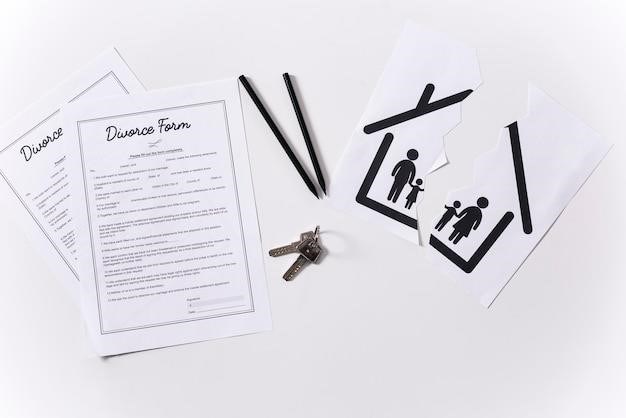Free 6×12 Utility Trailer Plans PDF⁚ A Comprehensive Guide
This guide provides free downloadable PDF plans for building a robust 6×12 utility trailer. Detailed instructions‚ diagrams‚ and material lists are included‚ enabling you to construct your own trailer and save money. Learn how to build a trailer with a 3500 lbs GVWR‚ using angle iron for the frame and cross members.
Building your own utility trailer offers significant advantages over purchasing a pre-made one. Firstly‚ it’s a cost-effective solution. Ready-made trailers can be expensive‚ while building your own allows you to control material costs and avoid retailer markups. This is especially beneficial if you already own some of the necessary tools and materials. Secondly‚ constructing a trailer is a rewarding DIY project that allows for personalization. You can tailor the design to your specific needs and preferences‚ choosing materials‚ dimensions‚ and features to perfectly suit your intended use. Whether you need a larger load capacity‚ specific side rails‚ or a unique tailgate design‚ building your own gives you complete control. Finally‚ the process of building a trailer provides valuable hands-on experience in construction and fabrication techniques‚ enhancing your practical skills. You gain a deep understanding of the trailer’s structure and mechanics‚ making future maintenance and repairs much easier.
Choosing the Right Plans⁚ Factors to Consider
Selecting the appropriate 6×12 utility trailer plans requires careful consideration of several key factors. First‚ assess your intended use. Will the trailer primarily transport heavy materials‚ lightweight goods‚ or a combination of both? This will influence the necessary weight capacity and overall trailer construction. Next‚ evaluate your skill level and available tools. Some plans may involve more complex techniques or require specialized equipment‚ while others are designed for beginners. Carefully review the plan’s specifications‚ including the axle type (single or double)‚ GVWR (Gross Vehicle Weight Rating)‚ and frame material. Ensure these specifications meet or exceed your anticipated load requirements and comply with local regulations. Consider the available space for construction. Ensure you have sufficient room to work comfortably and safely. Finally‚ check the plan’s clarity and completeness. Look for detailed diagrams‚ precise measurements‚ and comprehensive instructions. Clear‚ easy-to-follow plans can significantly reduce construction time and frustration;
Essential Tools and Materials List
Before embarking on your 6×12 utility trailer construction‚ gather the necessary tools and materials. Essential tools include a measuring tape‚ level‚ welder (or appropriate fasteners)‚ angle grinder with cutting discs‚ drill with various bits‚ wrenches‚ sockets‚ and a safety gear set (gloves‚ safety glasses‚ etc.). For materials‚ you’ll need angle iron for the frame and cross members (precise dimensions will vary according to your chosen plan)‚ a suitable axle with a capacity exceeding your anticipated load‚ trailer tires and wheels‚ a hitch‚ and U-bolts for axle mounting. The deck requires lumber; 2×6 tongue-and-groove boards are frequently used for the flooring‚ bolted to 2×4 cross pieces. Remember to factor in wood for side rails and a tailgate if your chosen plans incorporate these features. Don’t forget necessary hardware⁚ bolts‚ nuts‚ washers‚ and appropriate fasteners for all components. Consider purchasing galvanized or powder-coated materials for enhanced durability and rust prevention. Finally‚ always check your chosen plans for a complete and detailed list specific to their design.
Step-by-Step Construction Guide⁚ Frame Assembly
Begin by carefully reviewing your chosen 6×12 utility trailer plans’ frame assembly section. Precise measurements are crucial; accurately cut the angle iron according to the provided dimensions. Ensure all cuts are square and clean for optimal welding or bolting. Start by assembling the main longitudinal rails‚ ensuring they are perfectly parallel and aligned. Next‚ add the cross members‚ maintaining consistent spacing as indicated in the plans. This spacing is vital for structural integrity and load distribution. If welding‚ use appropriate techniques to ensure strong‚ even welds. For bolting‚ employ high-strength bolts and washers to prevent loosening under stress. Double-check all measurements and connections throughout the process. Correct any discrepancies immediately; it is easier to fix minor errors during assembly than later. Once the frame is complete‚ thoroughly inspect it for any imperfections or weaknesses. Reinforce any areas that appear less robust before proceeding to the next construction phase. Remember‚ a strong and well-constructed frame is the foundation of a safe and durable trailer.
Step-by-Step Construction Guide⁚ Deck and Side Installation
With the frame assembled‚ focus on installing the deck. Use 2″ x 6″ tongue-and-groove boards for the flooring‚ ensuring they’re securely fastened to the frame’s cross members using appropriate screws or bolts. Maintain even spacing between the boards to prevent warping or uneven weight distribution. The plans likely specify the type and placement of fasteners. Adhere to this precisely for a strong and durable deck. For side installation‚ consider using 1.25″ x 12″ clear fir boards or similar materials‚ again following the plan’s specifications for dimensions and placement; Secure the sides to the frame using robust fasteners‚ ensuring a snug fit against the frame and deck. If your plans include a tailgate‚ assemble it according to the instructions provided‚ ensuring hinges and latches are correctly installed and securely fastened. Precise measurements and attention to detail will ensure the sides and deck are properly aligned and attached to the frame. Consider pre-drilling holes to prevent wood splitting during installation‚ especially when using screws. Thoroughly check all connections for stability and strength before moving to the next stage of your trailer construction.
Step-by-Step Construction Guide⁚ Axle and Suspension
Installing the axle and suspension is crucial for the trailer’s functionality and safety. Begin by positioning the axle assembly centrally beneath the trailer frame‚ ensuring proper alignment with the frame’s cross members. Consult your plans for precise axle placement and mounting instructions. Securely attach the axle using U-bolts‚ carefully tightening them to the specified torque. Don’t overtighten‚ as this could damage the axle or suspension components. If your plans include leaf springs‚ install them according to the provided diagram. Ensure that the springs are correctly seated on the axle and securely attached to the frame. Check for proper clearance between the springs and other components. If overload springs are specified‚ carefully install these as well‚ making sure they’re correctly aligned and tensioned. Proper installation of the springs is essential for distributing the trailer’s load and ensuring a smooth ride. After installing the axle and suspension‚ test the functionality by gently rocking the trailer. This will help identify any issues with alignment or mounting before proceeding further. Remember to always consult your plans and follow the instructions carefully to achieve a safe and functional trailer.
Step-by-Step Construction Guide⁚ Hitch and Safety Features
Attaching the hitch is a critical step‚ ensuring your trailer connects securely to your towing vehicle. Begin by referencing your plans for the correct hitch type and placement. Ensure the hitch is properly aligned with the trailer frame and securely welded or bolted in place‚ according to the specifications. Use high-quality welding techniques or appropriate-sized bolts and washers for a robust connection. After attaching the hitch‚ inspect it thoroughly for any signs of weakness or misalignment. Next‚ install safety chains‚ connecting them to the trailer frame and hitch‚ ensuring they’re of sufficient length for safe maneuvering. Safety chains are essential to prevent runaway trailers in case of hitch failure. Install appropriate lighting‚ following all wiring diagrams and local regulations. This includes taillights‚ brake lights‚ turn signals‚ and license plate lights. Verify the functionality of all lights before use. Consider adding reflective tape to enhance visibility‚ especially in low-light conditions. Securely attach side marker lights and ensure they meet regulatory standards. Finally‚ check the trailer’s overall stability and maneuverability‚ ensuring it is safe for towing. Regularly inspect all safety features before each use to maintain safety and compliance.
Customization Options⁚ Tailgates and Accessories
Enhance your 6×12 utility trailer’s functionality with customizable tailgates and accessories. A hinged tailgate‚ as mentioned in some plans‚ offers easy loading and unloading of bulky items. Consider constructing a ramp gate for smoother loading of equipment like motorcycles or ATVs. This addition requires careful planning and integration with the existing trailer design. For added versatility‚ explore options like installing adjustable side rails. These provide secure containment for cargo of varying heights and dimensions. Securely attach them to the trailer frame‚ ensuring stability and strength. Think about adding tie-down points strategically located across the trailer bed. These provide secure anchoring for loads‚ preventing shifting during transport. Use heavy-duty D-rings or other secure fastening methods. Another valuable customization is a toolbox mounted to the tongue or side of the trailer. This keeps tools organized and easily accessible. If you plan on frequent camping trips or beach outings‚ consider adding a spare tire mount. This ensures you’re prepared for unexpected flat tires. Remember‚ always prioritize safety when customizing your trailer. Ensure all additions are securely fastened and meet weight capacity limitations. Properly installed accessories enhance both functionality and safety.
Safety Precautions and Regulations
Building and using a utility trailer necessitates prioritizing safety. Before commencing construction‚ meticulously review all plans and instructions. Ensure you possess the necessary tools and skills for safe operation. Always wear appropriate safety gear‚ including eye protection‚ gloves‚ and sturdy footwear. When working with power tools‚ adhere strictly to manufacturer’s safety guidelines. Properly secure all fasteners to prevent components from detaching during use. Regularly inspect the trailer’s structure for any signs of wear or damage. Address any issues promptly to avoid accidents. Understand and comply with all local and national regulations concerning trailer construction and operation. These regulations often dictate lighting requirements‚ braking systems‚ and weight limits. Ensure your completed trailer conforms to these standards. Never exceed the trailer’s weight capacity. Overloading can compromise structural integrity and lead to accidents. Properly distribute weight evenly across the trailer bed to maintain stability. Before each use‚ perform a thorough pre-trip inspection‚ checking tire pressure‚ lights‚ and hitch connection. Secure your load effectively using appropriate tie-down straps or other securing methods to prevent shifting during transport. Regular maintenance is crucial for safe operation. Check for signs of wear and tear and promptly address any issues. Remember‚ responsible use and diligent maintenance are key to ensuring the safe and reliable operation of your homemade trailer.
Troubleshooting Common Issues
During the construction or use of your 6×12 utility trailer‚ you might encounter some common problems. If the trailer frame is uneven or wobbly‚ double-check the measurements and ensure all welds are secure and properly aligned. Loose or missing bolts can cause instability; tighten or replace them as needed. If the wheels don’t rotate smoothly‚ check for axle alignment issues or bearing problems. Lubricate the bearings if necessary‚ or replace them if they are damaged. A squeaking sound might indicate friction in the axle or suspension components. Apply lubricant to reduce friction and eliminate the noise. If the trailer is difficult to steer or maneuver‚ ensure the hitch is correctly attached and properly lubricated. Uneven weight distribution can also affect maneuverability; redistribute the load to center it. If the trailer’s lights malfunction‚ verify the wiring connections and ensure the bulbs are functioning correctly. Replace faulty bulbs and repair any broken wiring. Should the trailer exhibit excessive swaying or instability while towing‚ check the tire pressure and ensure the load is properly secured. If problems persist‚ consult a qualified mechanic or trailer specialist. Remember‚ regular maintenance and preventative checks can significantly reduce the likelihood of encountering many of these issues. Addressing minor problems promptly can prevent them from escalating into more serious issues down the road.
Maintaining Your DIY Trailer
Regular maintenance is crucial for extending the lifespan of your homemade 6×12 utility trailer. Begin by inspecting the trailer’s structure after each use. Check for any loose bolts‚ welds‚ or damaged components. Tighten any loose fasteners and address any damage promptly. Before each use‚ visually inspect the tires for wear and tear‚ cuts‚ or bulges. Maintain the correct tire pressure as specified by the manufacturer to ensure optimal performance and safety. Periodically lubricate the trailer’s moving parts‚ such as the axle‚ bearings‚ and hitch. This reduces friction and prevents premature wear. Clean the trailer regularly to remove dirt‚ debris‚ and corrosive materials. Use a pressure washer or garden hose to thoroughly clean the trailer‚ paying attention to areas prone to rust. Apply a protective coating‚ such as paint or rust inhibitor‚ to exposed metal surfaces to prevent rust formation. Store the trailer in a dry‚ covered area when not in use to protect it from the elements. Inspect the lights and wiring regularly to ensure they are functioning correctly. Replace any damaged bulbs and repair any broken wiring promptly. Consider performing a thorough inspection of the trailer every six months or before any long trips. This includes a more detailed examination of the frame‚ suspension‚ and other critical components. By adhering to this simple maintenance schedule‚ you can ensure your DIY trailer remains safe‚ reliable‚ and functional for years to come.
Resources and Further Reading
For those seeking additional information beyond these free 6×12 utility trailer plans‚ numerous online and offline resources are available. Websites specializing in DIY projects and trailer building often offer detailed articles‚ tutorials‚ and videos covering various aspects of trailer construction‚ from material selection to advanced techniques. Many online forums and communities dedicated to woodworking‚ metalworking‚ and trailer building provide a platform for sharing experiences‚ troubleshooting issues‚ and exchanging tips and advice amongst fellow enthusiasts. Local libraries and bookstores may have books on trailer building‚ woodworking‚ and welding that can supplement your knowledge and skills. Consider checking with your local hardware stores or home improvement centers for additional resources‚ such as pamphlets‚ brochures‚ or expert advice on materials and tools. Remember to always prioritize safety when working on your trailer and follow all relevant safety guidelines and regulations. For specific questions about trailer regulations and safety standards in your area‚ consult your local Department of Motor Vehicles or equivalent authority. Furthermore‚ online retailers frequently offer detailed product specifications and instructional videos for the various components needed for your trailer project‚ which can prove invaluable in selecting appropriate parts and assembling your trailer effectively.


